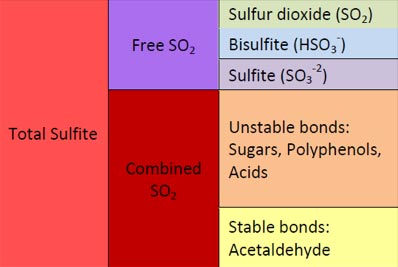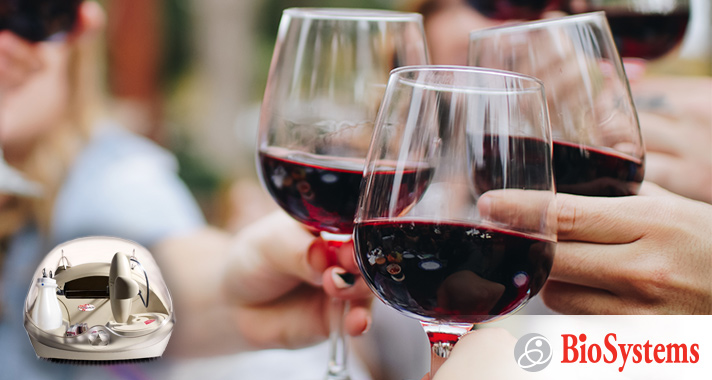Save time with fully automated total SO2 measurements.
Sulphites
The use of sulphites to preserve foods has been a regular practice for centuries. In wine, sulphite is a by-product of some fermentation reactions, but is also added to maintain its properties over time. Sulphites act in three ways:
- They prevent oxidation (antioxidant)
- They halt bacterial growth (antimicrobial)
- They inhibit enzyme reactions that result in colour changes
Because of the pH of wine, sulphites takes several forms at steady state. Free sulphite is found in the form of molecular SO2 (sulphur dioxide) or HSO3- (bisulphite) and SO3-2 (sulphite) after reacting with water. The other sulphite fraction occurs in wine in a combined form with unsaturated compounds (sugars, polyphenols, acids, acetaldehyde, etc.), which is in steady state with the free fraction. The sum of free and combined sulphites is total sulphites.
Sulphur

Spectrophotometry
5-5’-dithiobis(2-nitrobenzoic acid) (DTNB)
Spectrophotometry is based on a determination of solution transmittance or absorbance in the ultraviolet and visible spectrum.
Molecular absorption methods are perhaps the most widely used among all the quantitative analysis techniques in testing laboratories worldwide.
The power of this technique lies in identifying a reaction that is sensitive and selective to the compound to be analysed.
The Beer-Lambert law can then be used to find a relationship between absorbance variation and anolyte concentration.
This is a technique that determines the anolyte directly and rapidly, that can be automated, and that requires only low-cost instrumentation.
The spectrophotometric method used to determine total sulphites is based on 5-5’-dithiobis(2- nitrobenzoic acid) (DTNB).
SO2 uses its reducing power to cleave the disulphide bond, thus yielding 3- thio-6-nitrobenzoate (TNB), which can be measured at 405 nm (yellow).13,14
This reaction is rapid and can be readily automated. However, the method is known to work well with samples of white wine but can show interference with the red wine matrix.
BioSystems developed a new reagent to determine total sulphite concentrations in wines regardless of the matrix.
Unique kit for red and white wines – interference-free
Biosystems’ new reagent still determines total sulphites based on the DTNB chromogen, but the new formulation prevents interference in both red and white wine samples. This Total Sulphite reagent provides results equivalent to the official modified Monier- Williams method.
Benefits
- Rapid
- Automatic
- Low-cost determination of total sulphites regardless of the wine matrix.









